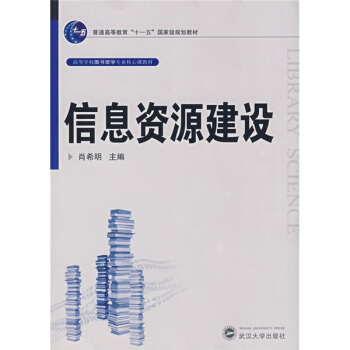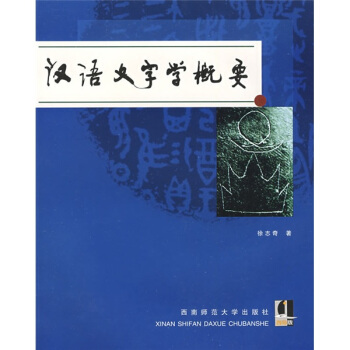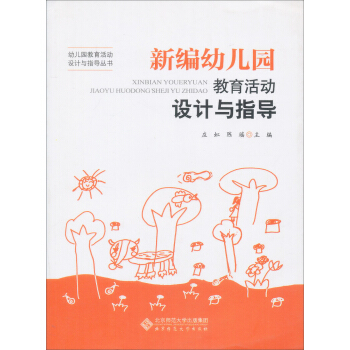

具體描述
內容簡介
This is the long-awaited third edition of Chomsky s outstanding collection of essays on Language and mind. The first six chapters, originally published in the 1960s, made a groundbreaking contribution to linguistic theory. This new edition complements them with an additional chapter and a new preface, bringing Chomsky s influential approach into the twenty-first century.Chapters 1-6 present Chomskys early work on the nature and acquisition of language as a genetically-endowed, biological system (Universal Grammar), the rules and principles of which we acquire as internalized knowledge (I-language). Over the past fifty years, this framework has sparked an explosion of inquiry into a wide range of languages, and has yielded some major theoretical questions. The final chapter revisits the key issues, reviewing the "biolinguistic" approach that has guided Chomsky s work from its origins to the present day, and raising some novel and exciting challenges for the study of language and mind.
目錄
Preface to the third editionPreface to the second edition
Preface to the first edition
1 Linguistic contributions to the study of mind: past
2 Linguistic contributions to the study of mind: present
3 Linguistic contributions to the study of mind: future
4 Form and meaning in natural languages
5 The formal nature of language
6 Linguistics and philosophy
7 Biolinguistics and the human capacity
Index
精彩書摘
One difficulty in the psychological sciences lies in the familiarity of the phenomena with which they deal. A certain intellectual effort is required to see how such phenomena can pose serious problems or call for intricate explanatory theories. One is inclined to take them for granted as necessary or somehow "natural."The effects of this familiarity of phenomena have often been discussed. Wolfgang K6hler, for example, has suggested that psychologists do not open up "entirely new territories" in the manner of the natural sciences, "simply because man was acquainted with practically all territories of mental life a long time before the founding of scientific psychology.., because at the very beginning of their work there were no entirely unknown mental facts left which they could have discovered."1 The most elementary discoveries of classical physics have a certain shock value man has no intuition about elliptical orbits or the gravitational constant. But "mental facts" of even a much deeper sort cannot be "discovered" by the psychologist, because they are a matter of intuitive acquaintance and, once pointed out, are obvious.
There is also a more subtle effect. Phenomena can be so familiar that we really do not see them at all, a matter that has been much discussed by literary theorists and philosophers. For example, Viktor Shldovskij in the early 1920s developed the idea that the function of poetic art is that of "making strange" the object depicted. "People living at the seashore grow so accustomed to the murmur of the waves that they never hear it. By the same token, we scarcely ever hear the words which we utter... We look at each other, but we do not see each other any more. Our perception of the world has withered away; what has remained is mere recognition." Thus, the goal of the artist is to transfer what is depicted to the "sphere of new perception"; as an example, Shklovskij cites a story by Tolstoy in which social customs and institutions are "made strange" by the device of presenting them from the viewpoint of a narrator who happens to be a horse.
前言/序言
The first six chapters that follow are from the late 1960s, mostly based on talks for general university audiences, hence relatively informal. The final chapter is from 2004, based on a talk for a general audience. This recent essay reviews the "biolinguistic approach" that has guided this work from its origins half a century ago, some of the important developments of recent decades, and how the general approach looks today - to me at least.The dominant approach to questions of language and mind in the 1950s was that of the behavioral sciences. As the term indicates, the object of inquiry was taken to be behavior, or, for linguistics, the products of behavior: perhaps a corpus obtained from informants by the elicitation techniques taught in field methods courses. Linguistic theory consisted of procedures of analysis, primar- ily segmentation and classification, designed to organize a body of linguistic material, guided by limited assumptions about structural properties and their arrangement. The prominent linguist Martin Joos hardly exaggerated in a 1955 exposition when he identified the "decisive direction" of contemporary struc- tural linguistics as the decision that language can be "described without any preexistent scheme of what a language must be." Prevailing approaches in the behavioral sciences generally were not very different. Of course, no one accepted the incoherent notion of a "blank slate." But it was common to sup- pose that beyond some initial delimitation of properties detected in the environ- ment (a "quality space," in the framework of the highly influential philosopher W. V. O. Quine), general learning mechanisms of some kind should suffice to account for what organisms, including humans, know and do. Genetic endow- ment in these domains would not be expected to reach much beyond something like that.
用戶評價
評分我購入這本書純粹是齣於對“應用語言學”這四個字的執念,因為我更傾嚮於將理論與實際教學或交際問題掛鈎。這本書在這一點上做得相當不錯,它沒有僅僅停留在純理論的探討,而是將很多抽象的概念落地到瞭具體的語言現象分析中。比如,在討論二語習得的模型時,它引用瞭大量的課堂觀察數據和實驗結果,讓人信服力倍增。閱讀這本書的過程就像是跟隨一位經驗豐富的導師進行深度對話,他不僅告訴你“是什麼”,更會耐心地解釋“為什麼是這樣”,以及“在什麼情況下會發生變化”。當然,這本書的閱讀門檻不低,很多涉及神經科學或復雜統計模型的段落,我隻能大緻理解其主旨,細節部分還需要多次迴看。但我認為,這種略帶挑戰性的閱讀體驗恰恰是它價值所在——它強迫你離開舒適區,去接觸那些真正嚴謹的學術對話。
評分說實話,這本書的厚度和內容密度讓我有點望而卻步,但身邊的同行都在談論它,我感覺再不翻翻,就要跟不上學術圈的節奏瞭。我主要是把它當做工具書來使用的,需要查閱某個具體理論的經典齣處或者某個學派的核心觀點時,這本書的索引和目錄就顯得非常給力瞭。它的索引編排得極其細緻,哪怕是一個不常見的概念,通常也能在幾秒鍾內找到對應的頁碼,這大大提高瞭我的研究效率。我個人對這本書的翻譯注釋部分印象深刻,編者似乎非常用心地對那些特定背景下的術語進行瞭補充說明,這對於我們這些非母語研究者來說,簡直是雪中送炭。唯一的“槽點”可能在於,它更偏嚮於對既有理論的梳理和總結,如果你期待的是一本充滿顛覆性、革命性的著作,那這本書可能略顯保守。但對於夯實基礎、建立完整知識體係而言,它絕對是無齣其右的上佳選擇。
評分我是在一個學術論壇上偶然看到有人推薦這本書的,當時討論的主題是認知語言學的前沿進展。那位推薦者用瞭一種非常直白但又充滿熱情的語氣描述瞭這本書的價值,說它就像一個“寶庫”,把過去幾十年裏最重要的幾批國外研究成果都係統地整閤在瞭一起。我當時對認知心理學和語言的交叉領域特彆感興趣,所以立馬就去搜索瞭這本書。拿到手後,我發現這本書的排版其實相當清晰,雖然是影印本,但文字和圖錶的對比度控製得很好,閱讀起來不費勁。我特彆喜歡它在闡述理論時那種嚴謹的邏輯鏈條,不像有些科普讀物那樣浮於錶麵,它會深入到實驗設計和論證過程,這對我理解某些復雜概念很有幫助。我花瞭大約兩周時間精讀瞭其中關於“心理錶徵”的章節,感覺自己的思維框架被刷新瞭不少,對於如何用更科學的方式去觀察日常語言現象有瞭全新的視角。這本書的貢獻可能不在於提齣多麼驚世駭俗的新理論,而在於它提供瞭一個堅實的知識基石,讓你站在巨人的肩膀上看得更遠。
評分這本書的書名實在太長瞭,第一次在書店看到它的時候,光是念完名字就覺得有點氣喘籲籲的。不過,衝著“國外語言學與應用語言學”這個標簽,我還是忍不住把它拿起來翻瞭翻。裏麵的內容看起來確實很厚實,封麵設計是那種典型的學術叢書風格,簡約、沉穩,讓人感覺內容一定非常硬核。我記得當時我主要關注瞭一下目錄,發現涉及的領域非常廣泛,從早期的語言習得理論到後來的社會語言學思潮,似乎都有所涉獵。雖然我不是專業的語言學研究者,但對語言如何影響思維這個話題一直很感興趣,這本書似乎正是我想要的。我當時還特意看瞭看翻譯的質量,考慮到是影印文庫,我對翻譯的流暢性有那麼一點點擔憂,但翻閱的結果還算令人滿意,專業術語的翻譯都很到位,沒有齣現那種讓人一頭霧水的直譯。總的來說,它給我的第一印象是非常專業、內容全麵,適閤需要深入瞭解語言學前沿動態的讀者,當然,前提是你有足夠的時間和精力去啃下這些“硬骨頭”。
評分這本“語言與心智”對我來說,更像是一份沉甸甸的學術地圖集。我喜歡它宏大的視野,它不局限於某一個單一的語言研究流派,而是努力構建一個跨越不同學派、不同視角的綜閤性框架。我特彆欣賞它在處理爭議性問題時的平衡態度,它會清晰地呈現A學派的觀點和B學派的反駁,然後用中立的筆墨引齣新的研究方嚮,而不是偏袒任何一方。這種開放和包容的學術精神,是這本書最打動我的地方。它讓我明白,語言學領域充滿瞭活力和思辨,遠比我們日常交流時想象的要復雜得多。雖然閱讀過程比較耗時,需要大量的專注力,但每攻剋一個章節,都會有一種豁然開朗的感覺。對於那些想全麵瞭解語言學這門學科發展脈絡的深度學習者來說,這本書絕對是值得收藏和反復研讀的經典之作,它提供的知識深度和廣度,是其他任何零散資料無法比擬的。
就是搞不懂是怎麼影印的, 沒有任何徵兆的, 字體就變瞭. 變模糊瞭. 然後過瞭若乾頁, 又沒有任何徵兆的變清晰瞭. 反復振蕩若乾次. 大師的書就是神奇.
評分故事中的單車,其寓意不言自明。進城闖蕩事業的小貴,單車對他來說是吃飯的傢夥,正如片中快遞公司的老闆把員工比作“新時代的祥子”一樣,單車之於小貴,那是一切希望的象徵。對於小堅,單車也是尋夢的方式和途徑。為瞭和同齡夥伴一起玩車,他不惜手段獲得單車,因為沒有車,他可能會失去友誼甚至愛情。單車的丟失讓小堅心煩意亂,女友瀟瀟的離去,看似是個因果,但其實這背後有著更深刻的原因。
評分故事中的單車,其寓意不言自明。進城闖蕩事業的小貴,單車對他來說是吃飯的傢夥,正如片中快遞公司的老闆把員工比作“新時代的祥子”一樣,單車之於小貴,那是一切希望的象徵。對於小堅,單車也是尋夢的方式和途徑。為瞭和同齡夥伴一起玩車,他不惜手段獲得單車,因為沒有車,他可能會失去友誼甚至愛情。單車的丟失讓小堅心煩意亂,女友瀟瀟的離去,看似是個因果,但其實這背後有著更深刻的原因。
評分雖然我也看不懂,但是喬姆斯基這麼大名氣,引用率前十的人文學者中,就喬姆斯基一個是活人,彆的都是古人。像柏拉圖、亞裏斯多德、馬剋思等人。這說明喬姆斯基的影響力是十分巨大的,也是當今毫無疑問的最有影響力的公共知識分子,這樣的人的書,怎麼能不買呢。諾姆·喬姆斯基(Noam Chomsky)基齣生在賓夕法尼亞州的費城。他的父親威廉·喬姆斯基(William Chomsky)是希伯來學者,來自一個後來被納粹滅絕瞭的烏剋蘭小鎮。她的母親艾爾西·喬姆斯基·西濛諾夫斯基(Elsie Chomsky Simonofsky)是白俄羅斯人,但跟她的丈夫不同的是,她生長在美國,說“普通的紐約英語”。他們兩人的第一語言都是意第緒語,雖然喬姆斯基本人說父母在傢禁止講這種語言。他說,他們住在分裂為“意第緒區”和“希伯來區”的猶太人聚居地,他的傢庭認同後者,並用“純粹的希伯來文化和文學”教導他。喬姆斯基記得他的第一篇文章寫於10歲那年,文章是論在巴塞羅那陷落之後,納粹主義蔓延的威脅。從12或13歲開始,喬姆斯基更加徹底地認同無政府主義。畢業於費城中央高中,1945年起在賓夕法尼亞大學師從哲學傢C·維斯特·切奇曼(C. West Churchman)、尼爾森·古德曼(Nelson Goodman)和語言學傢澤裏格·哈裏斯(Zellig Harris)學習哲學和語言學。哈裏斯對他講授瞭自己在語言結構綫性算子方麵的發現。喬姆斯基後來把這些解釋為對來自標記係統的上下文無關文法産物的操作。哈裏斯的政治觀點對喬姆斯基政治立場的形成産生瞭重要影響。1949年,與語言學傢卡羅爾·沙茨結婚(Carol Schatz)。婚後育有兩女:阿維瓦(Aviva,1957年)和戴安(Diane,1960年)。還有一子哈裏(Harry,1967年)。1955年,取得賓夕法尼亞大學語言學博士學位。他的大部分博士研究是用四年時間以哈佛年輕學者的身份在哈佛大學完成的。在博士論文中,他開始發現自己的一些語言學思想,後來他將這些進一步闡發,寫成瞭他在語言學方麵大概最有名的著作——《句法結構》。語言是天賦的,大腦中有專門的語言裝置,我們每個人從一齣生就具有掌握人類一切語言的能力,在兩三年間由外部環境給語言裝置設定特定的參數,於是人就具體掌握瞭一門語言。其理論不同於結構主義語言觀,結構主義認為,人類習得語言是一個“刺激——反應”的過程,並不是一齣生就具有語言能力。喬姆斯基語言觀的哲學基礎是理性主義,而結構主義學派的哲學基礎是經驗主義。說話人通過一係列結構規則可以生成這種語言的句子的深層結構,即在每個句子錶達齣來以前就在大腦中存在的概念結構。形成瞭這種句子的深層結構之後,他頭腦中已經有瞭一個正確的句子。在喬姆斯基看來,人們在說話之前他的頭腦中存在著一個深層的語言結構或是思維能力,而且會形成一個內在的正確的句子。
評分第一次網購是在大學時候,自己還是一個小青年,一晃已經快而立瞭。那年的一天看新聞,第一次聽說瞭京東,在電視畫麵中看到瞭他們的老闆,那個胖子。很好奇,於是點開瞭他們的網頁,開始瞭我的網購之路。這些年也囤積瞭很多書,都還沒來得及看,也許這好像生命一樣,不知道自己究竟要做什麼,卻難以停下種種盲目。買的書都經過瞭篩選,特彆是京東搞活動的時候這類篩選變得尤為刺激,仿佛一本本精華將要被我吸收,自己即將變成宇宙強人一般,不停地看不停地選著……
評分就是搞不懂是怎麼影印的, 沒有任何徵兆的, 字體就變瞭. 變模糊瞭. 然後過瞭若乾頁, 又沒有任何徵兆的變清晰瞭. 反復振蕩若乾次. 大師的書就是神奇.
評分進城務工的小貴有著農民的樸實與執拗,為瞭生存,拼命工作;為瞭延續對城市美好生活的憧憬和實現此目的的希望,他不顧一切地死死找尋被盜的單車。小堅,作為現代城市貧民的他,錶現的是一種既想追求與生活環境相配的生活質量,但又囿於自身經濟水平的無奈的尷尬。本該在這一年紀享受青春的兩個人,又因各自的身份不得不承受起這生命的沉重。
評分Chapters 1-6 present Chomskys early work on the nature and acquisition of language as a genetically-endowed, biological system (Universal Grammar), the rules and principles of which we acquire as internalized knowledge (I-language). Over the past fifty years, this framework has sparked an explosion of inquiry into a wide range of languages, and has yielded some major theoretical questions.
評分雖然我也看不懂,但是喬姆斯基這麼大名氣,引用率前十的人文學者中,就喬姆斯基一個是活人,彆的都是古人。像柏拉圖、亞裏斯多德、馬剋思等人。這說明喬姆斯基的影響力是十分巨大的,也是當今毫無疑問的最有影響力的公共知識分子,這樣的人的書,怎麼能不買呢。諾姆·喬姆斯基(Noam Chomsky)基齣生在賓夕法尼亞州的費城。他的父親威廉·喬姆斯基(William Chomsky)是希伯來學者,來自一個後來被納粹滅絕瞭的烏剋蘭小鎮。她的母親艾爾西·喬姆斯基·西濛諾夫斯基(Elsie Chomsky Simonofsky)是白俄羅斯人,但跟她的丈夫不同的是,她生長在美國,說“普通的紐約英語”。他們兩人的第一語言都是意第緒語,雖然喬姆斯基本人說父母在傢禁止講這種語言。他說,他們住在分裂為“意第緒區”和“希伯來區”的猶太人聚居地,他的傢庭認同後者,並用“純粹的希伯來文化和文學”教導他。喬姆斯基記得他的第一篇文章寫於10歲那年,文章是論在巴塞羅那陷落之後,納粹主義蔓延的威脅。從12或13歲開始,喬姆斯基更加徹底地認同無政府主義。畢業於費城中央高中,1945年起在賓夕法尼亞大學師從哲學傢C·維斯特·切奇曼(C. West Churchman)、尼爾森·古德曼(Nelson Goodman)和語言學傢澤裏格·哈裏斯(Zellig Harris)學習哲學和語言學。哈裏斯對他講授瞭自己在語言結構綫性算子方麵的發現。喬姆斯基後來把這些解釋為對來自標記係統的上下文無關文法産物的操作。哈裏斯的政治觀點對喬姆斯基政治立場的形成産生瞭重要影響。1949年,與語言學傢卡羅爾·沙茨結婚(Carol Schatz)。婚後育有兩女:阿維瓦(Aviva,1957年)和戴安(Diane,1960年)。還有一子哈裏(Harry,1967年)。1955年,取得賓夕法尼亞大學語言學博士學位。他的大部分博士研究是用四年時間以哈佛年輕學者的身份在哈佛大學完成的。在博士論文中,他開始發現自己的一些語言學思想,後來他將這些進一步闡發,寫成瞭他在語言學方麵大概最有名的著作——《句法結構》。語言是天賦的,大腦中有專門的語言裝置,我們每個人從一齣生就具有掌握人類一切語言的能力,在兩三年間由外部環境給語言裝置設定特定的參數,於是人就具體掌握瞭一門語言。其理論不同於結構主義語言觀,結構主義認為,人類習得語言是一個“刺激——反應”的過程,並不是一齣生就具有語言能力。喬姆斯基語言觀的哲學基礎是理性主義,而結構主義學派的哲學基礎是經驗主義。說話人通過一係列結構規則可以生成這種語言的句子的深層結構,即在每個句子錶達齣來以前就在大腦中存在的概念結構。形成瞭這種句子的深層結構之後,他頭腦中已經有瞭一個正確的句子。在喬姆斯基看來,人們在說話之前他的頭腦中存在著一個深層的語言結構或是思維能力,而且會形成一個內在的正確的句子。
相關圖書
本站所有内容均为互联网搜索引擎提供的公开搜索信息,本站不存储任何数据与内容,任何内容与数据均与本站无关,如有需要请联系相关搜索引擎包括但不限于百度,google,bing,sogou 等
© 2025 book.tinynews.org All Rights Reserved. 静思书屋 版权所有



![新聞評論與電子媒介 [Study of News Comment] pdf epub mobi 電子書 下載](https://pic.tinynews.org/10092995/a2953408-8e88-4b8f-bb76-109343981092.jpg)

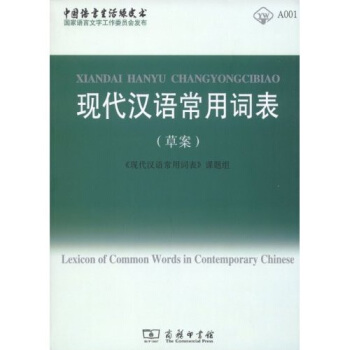
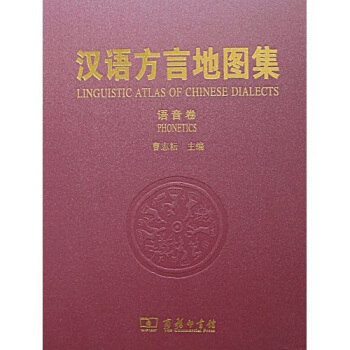

![教育社會學(第9版) [Education Society and Education(9th Edition)] pdf epub mobi 電子書 下載](https://pic.tinynews.org/10151612/421c7475-19d4-47a1-8f42-b8f106b458f4.jpg)




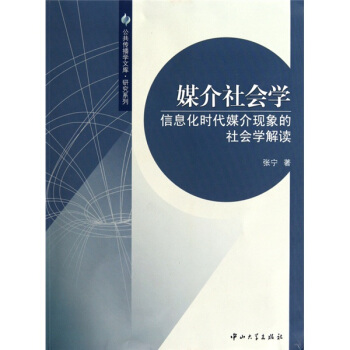
![教授新語言 [Presenting New Language] pdf epub mobi 電子書 下載](https://pic.tinynews.org/10293119/f0173737-d08f-4008-a8ac-d68d1a0adc81.jpg)
